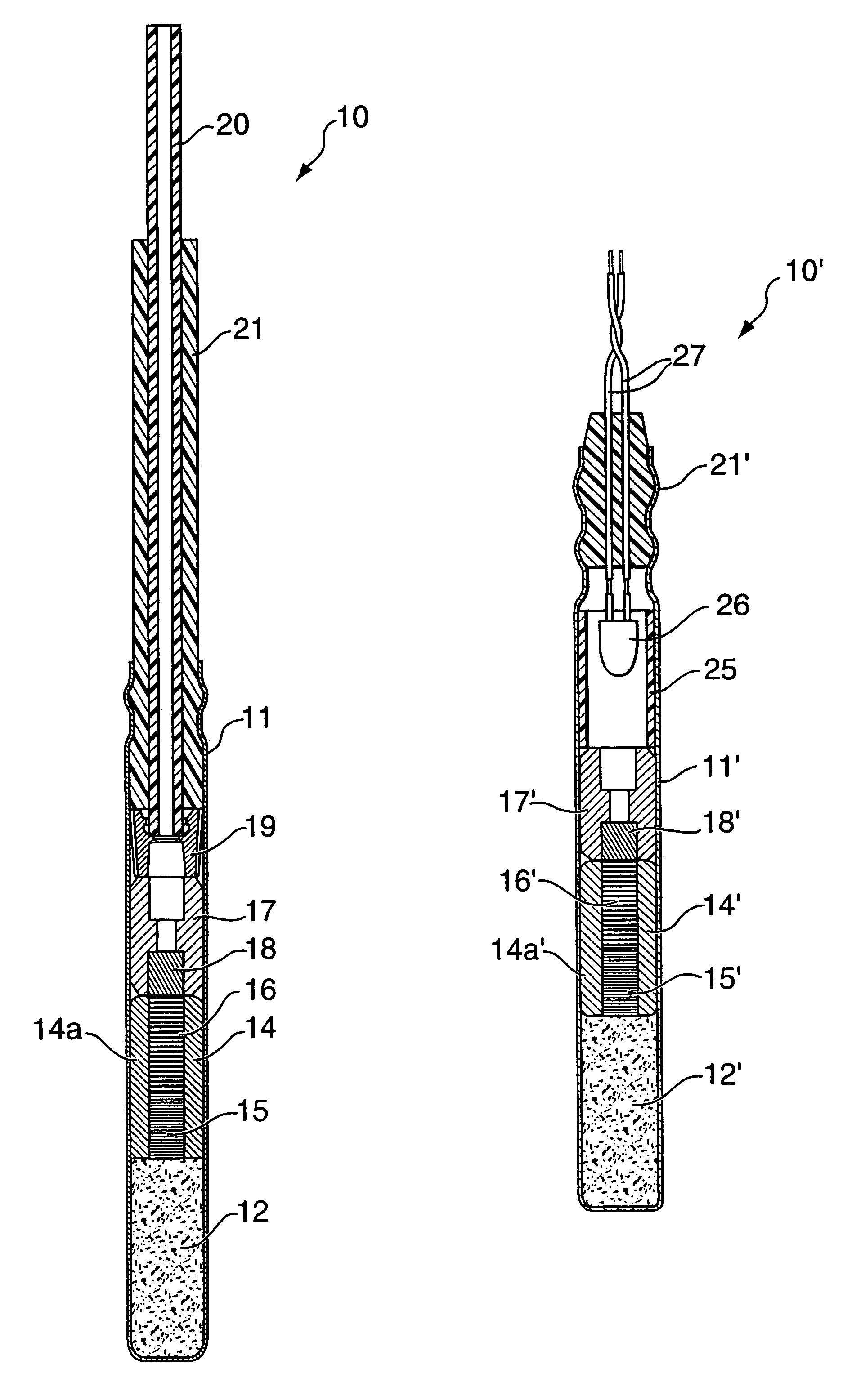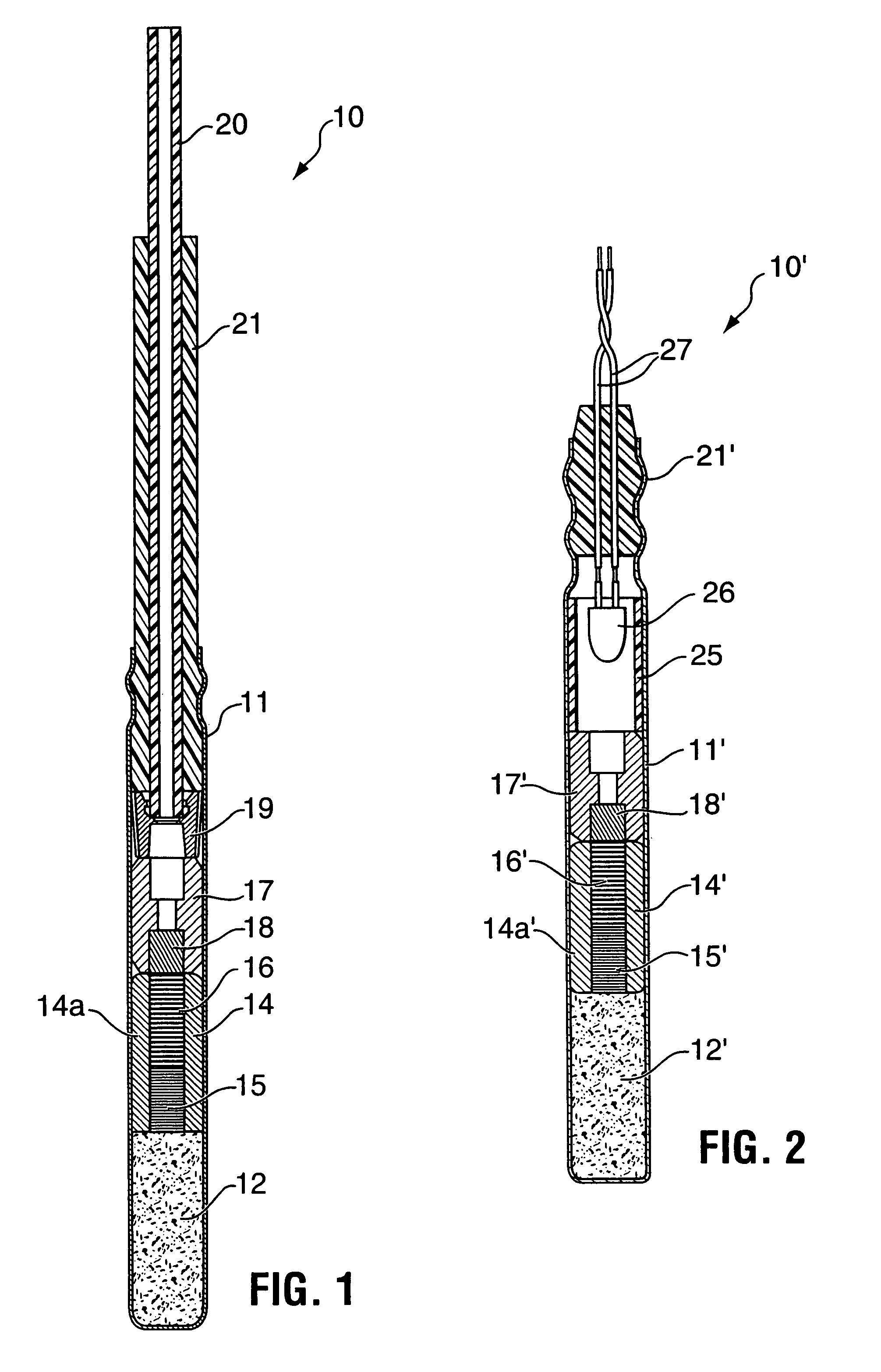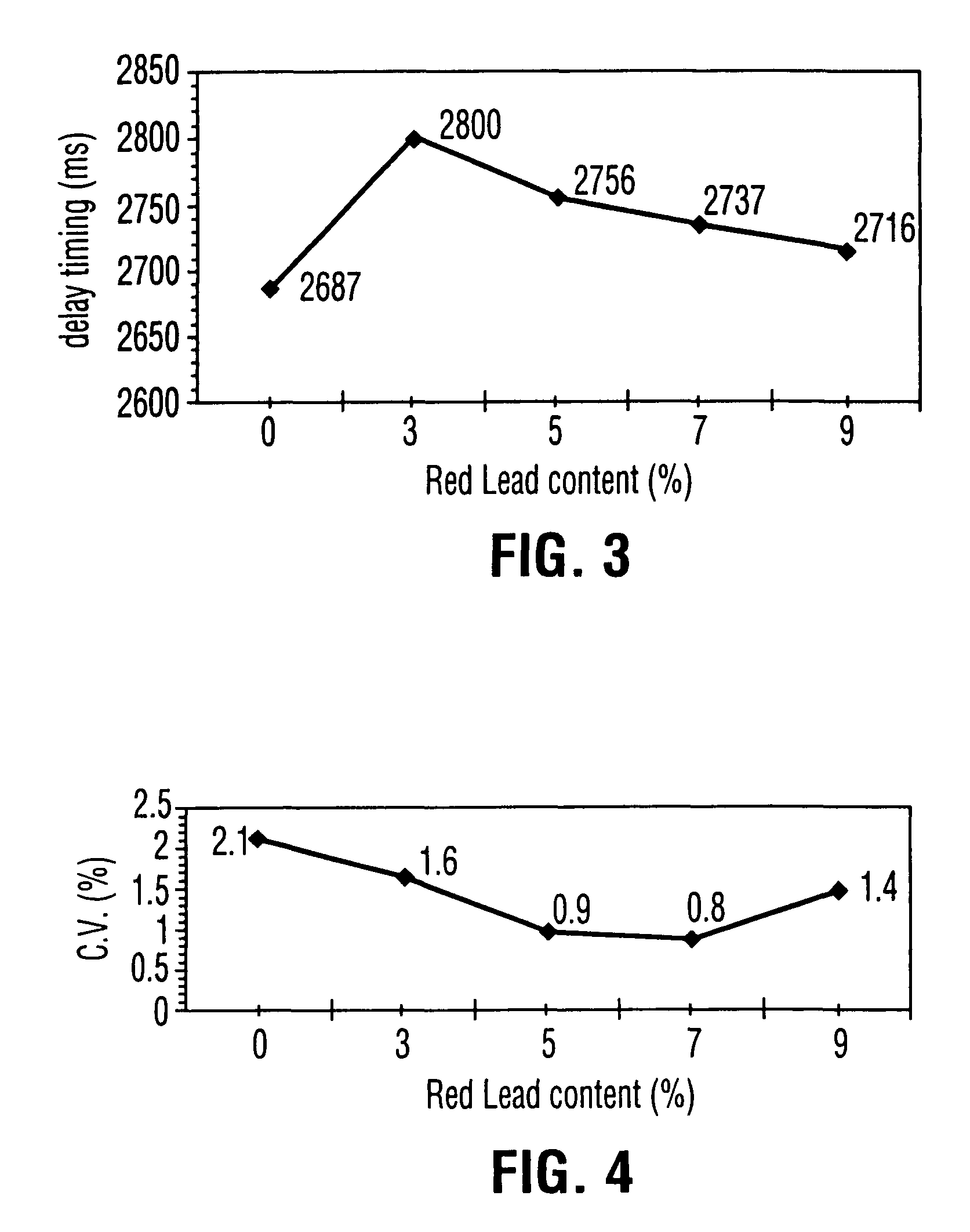Delay compositions and detonation delay device utilizing same
a delay composition and detonation delay technology, applied in the direction of electric fuzes, fuse connectors, explosions, etc., can solve the problems of low thermal conductivity and heat capacity, delay devices that cannot also serve as detonators, and create timing delays, etc., to achieve reliable ignition and long timing delays
- Summary
- Abstract
- Description
- Claims
- Application Information
AI Technical Summary
Benefits of technology
Problems solved by technology
Method used
Image
Examples
example 1
[0044]Small quantities (10 g samples) of dry mixed BaSO4 / Silicon compositions were prepared containing 3%, 5%, 7%, and 9% by weight of Pb3O4.
[0045]Rigid zinc tubular confinement elements having bore diameters of 3.35 mm were loaded with each of the compositions, as well as a control containing no Pb3O4. The loaded rigid confinement elements were assembled into detonators for testing. It was found necessary to use a Pb3O4 / Si starter composition on top of the BaSO4 / Silicon / Pb3O4 mixture for reliable ignition. A pyrotechnic sealer element was placed on top of the starter element. These detonators were assembled as shocktube (non-electric) detonators and tested for average delay timing and coefficient of variation (CV). The results of the tests are shown in Table 1 below. The 5% and the 7% Pb3O4 samples showed a noticeable improvement in timing accuracy compared to the control containing no Pb3O4.
[0046]
TABLE 1AVERAGE DELAYCOEFFICIENT OFPb3O4 CONTENTTIMINGVARIATION02687 ms2.1%32800 ms1.6...
example 2
Dry Mix:
[0049]A production mix sample of standard barium sulfate / silicon composition containing 45% by weight of silicon and 55% by weight of barium sulfate (referred to as Y composition) was first divided in 5 small mixes of 10 g each in a small Velostat™ (electrically conductive polymer) container. The first sample was left intact as a reference control sample while an addition of 3%, 5%, 7%, and 9% of red lead was made in the subsequent mixes. Conductive rubber balls were added to the mixes to help the ingredients to mix together during tumbling of the Velostat™ containers.
Wet Mix:
[0050]A 1 Kg batch of a modified standard barium sulfate / silicon composition (Y composition) having 6% red lead in it was prepared. The respective mass ratios for the ingredients were 51.7% of BaSO4 (0.8 m2 / g surface area), 42.3% Silicon (milled for 12 hours) and 6% of Pb3O4. Although the red lead was added to the medium from the start to ensure a good dispersion of particles, a regular wet mixing proce...
example 3
[0076]In this Example, the maximum quantity of red lead that can be added to the barium sulfate / Si composition for a long delay period detonator is identified and the resistance to shock stop (failure of a detonator due to the shock from an adjacent explosion) of such systems is characterized for both, drawn lead and rigid confinement element technology.
[0077]All mixes used for the delay timing evaluation are from small dry mixes where red lead was added in various quantities in barium sulfate / Si. The ingredients were put together and tumbled in small Velostat pots with conductive rubber balls.
[0078]The mixes used for the shock resistance evaluation were made wet mix in batch of 700 g.
Powder Sensitivity:
[0079]Friction sensitivity
Test Description:
[0080]A steel torpedo of 1.33 Kg weight slides on a sample of powder from 30 inch height and 30° angle.
[0081]No ignition observed in ten trials when the 12% red lead content mix was tested for friction sensitivity.
[0082]Other powder samples ...
PUM
| Property | Measurement | Unit |
|---|---|---|
| density | aaaaa | aaaaa |
| density | aaaaa | aaaaa |
| particle size | aaaaa | aaaaa |
Abstract
Description
Claims
Application Information
 Login to View More
Login to View More - R&D
- Intellectual Property
- Life Sciences
- Materials
- Tech Scout
- Unparalleled Data Quality
- Higher Quality Content
- 60% Fewer Hallucinations
Browse by: Latest US Patents, China's latest patents, Technical Efficacy Thesaurus, Application Domain, Technology Topic, Popular Technical Reports.
© 2025 PatSnap. All rights reserved.Legal|Privacy policy|Modern Slavery Act Transparency Statement|Sitemap|About US| Contact US: help@patsnap.com



